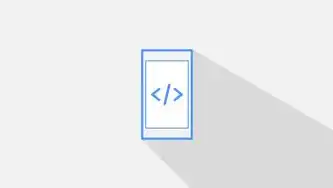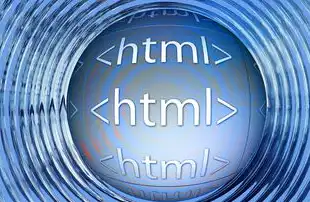本文目录导读:
- Introduction to HTML5
- Building Blocks of an HTML5 Company Website
- Styling with CSS
- Ensuring Responsiveness
In today's digital era, having a robust and visually appealing website is crucial for any business. The HTML5 company website source code provides a comprehensive framework for creating modern web applications that are not only user-friendly but also optimized for various devices and platforms.
Introduction to HTML5
HTML5, the fifth major revision of the Hypertext Markup Language, introduced numerous enhancements and new features aimed at improving web development. With its support for multimedia content, improved semantics, and enhanced form elements, HTML5 has revolutionized how websites are built and interact with users.

图片来源于网络,如有侵权联系删除
Key Features of HTML5:
- Multimedia Support: HTML5 allows embedding audio and video directly into web pages without relying on third-party plugins like Flash.
- Semantic Elements: New tags such as
<article>,<section>,<header>, and<footer>provide better structure and meaning to web content. - Form Enhancements: Improved input types, validation, and styling options make forms more intuitive and accessible.
- Canvas and SVG: These technologies enable dynamic graphics rendering and vector-based illustrations within web browsers.
- Web Storage: LocalStorage and SessionStorage offer persistent storage solutions for client-side data management.
- Geolocation API: Enables location-based services by accessing device coordinates.
- WebSocket: Facilitates real-time communication between clients and servers using bi-directional messaging channels.
Building Blocks of an HTML5 Company Website
Creating a professional-looking company website involves several key components that work together seamlessly. Here's a breakdown of these essential building blocks:
Header Section
The header section typically contains the company logo, navigation menu, and search bar. It serves as the visual anchor of the webpage and helps visitors quickly identify the brand.
<header>
<div class="logo">
<img src="logo.png" alt="Company Logo">
</div>
<nav>
<ul>
<li><a href="#home">Home</a></li>
<li><a href="#about">About Us</a></li>
<li><a href="#services">Services</a></li>
<li><a href="#contact">Contact</a></li>
</ul>
</nav>
</header>
Main Content Area
The main content area is where most of the information resides. It can be divided into sections using semantic HTML5 tags to improve accessibility and seo.
<main>
<section id="home">
<h1>Welcome to Our Company</h1>
<p>At our company, we specialize in providing innovative solutions tailored to your needs.</p>
</section>
<section id="about">
<h2>About Us</h2>
<p>We have been serving our customers since [year]. Our mission is to deliver excellence through quality products and exceptional service.</p>
</section>
<!-- Additional sections for services, testimonials, etc. -->
</main>
Footer Section
The footer often includes copyright notices, social media links, and contact details. It acts as a secondary navigation point for users who want to explore further.

图片来源于网络,如有侵权联系删除
<footer>
<p>© 2023 Your Company Name | All rights reserved.</p>
<div class="social-media-links">
<a href="https://twitter.com/yourcompany"><i class="fab fa-twitter"></i></a>
<a href="https://facebook.com/yourcompany"><i class="fab fa-facebook-f"></i></a>
<a href="https://instagram.com/yourcompany"><i class="fab fa-instagram"></i></a>
</div>
</footer>
Styling with CSS
To achieve a polished look, CSS is used to style the HTML elements. This includes typography, layout, colors, and responsive design principles.
body {
font-family: 'Arial', sans-serif;
line-height: 1.6;
}
header {
background-color: #333;
color: white;
padding: 10px 20px;
}
nav ul {
list-style-type: none;
margin: 0;
padding: 0;
display: flex;
}
nav li {
margin-right: 15px;
}
nav a {
text-decoration: none;
color: white;
}
main {
padding: 40px;
}
footer {
background-color: #f8f9fa;
text-align: center;
padding: 20px 0;
}
Ensuring Responsiveness
With the rise of mobile devices, ensuring that your website looks good across different screen sizes is crucial. Responsive design techniques allow you to create fluid layouts that adapt to various viewport widths.
Using Media Queries
Media queries in CSS enable you to
标签: #html5公司网站源码



评论列表